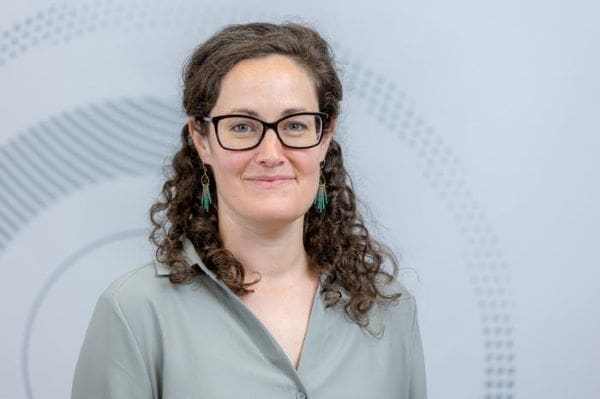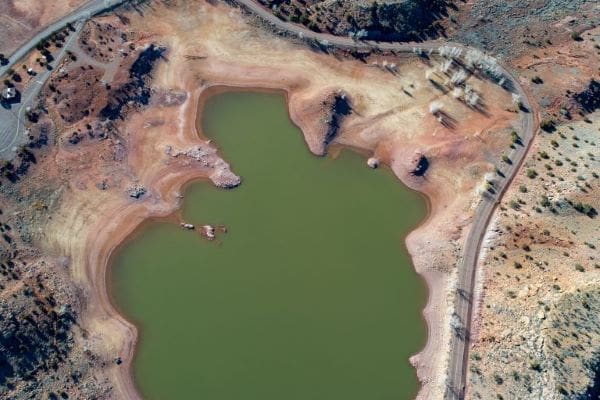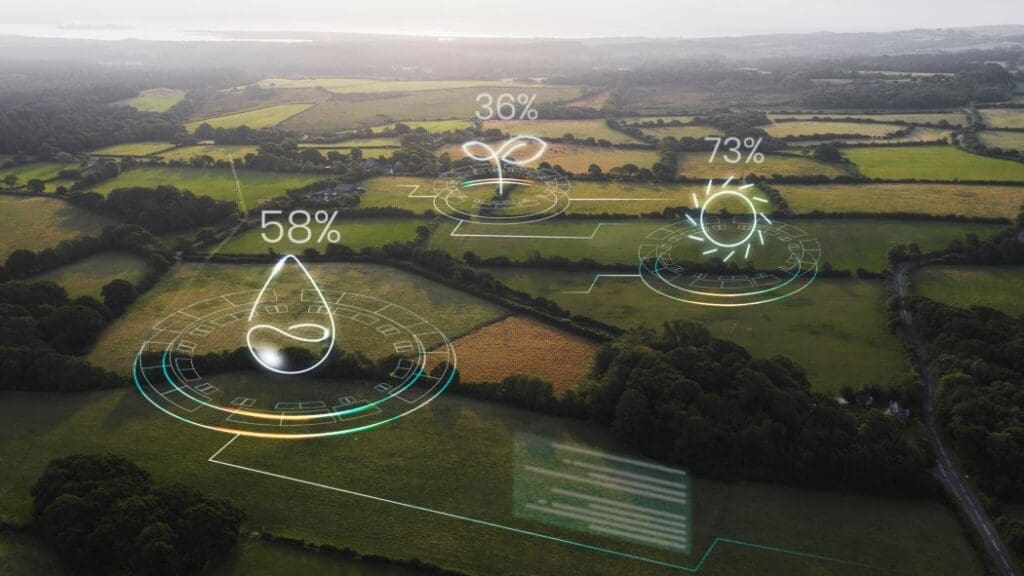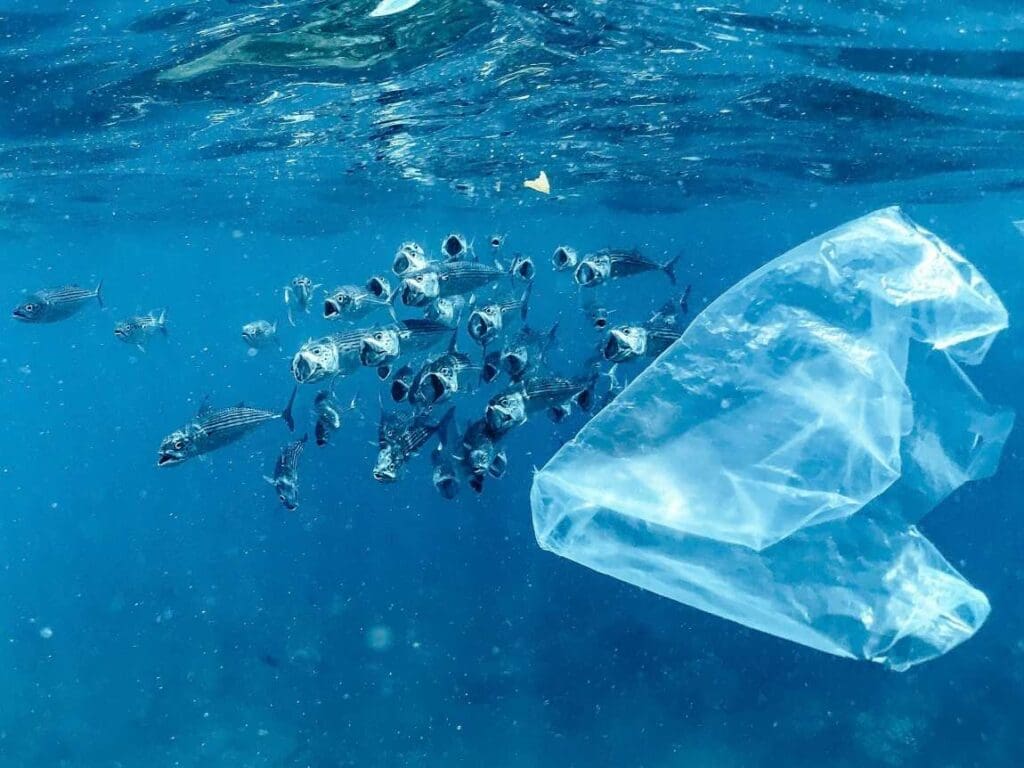Explore the latest insights from top science journals in the Muser Press daily roundup (July 16, 2025), featuring impactful research on climate change challenges.
In brief:
RNA viruses may differentially shape carbon recycling in the ocean
A new study by researchers at Bar-Ilan University has uncovered that certain ocean viruses – specifically RNA viruses – may disrupt how carbon and nutrients are recycled in the ocean, potentially altering the global carbon cycle.

The research, conducted in partnership with Rutgers University, focuses on viruses that infect microscopic algae known as phytoplankton, which are essential to life on Earth. These tiny organisms not only generate much of the planet’s oxygen but also play a critical role in drawing down carbon dioxide out of the atmosphere. When phytoplankton are infected and killed by viruses, they release dissolved organic matter (DOM) into the surrounding seawater that serve as food for marine bacteria that help recycle a substantial amount of carbon and nutrients.
However, the study, recently published in Science Advances, found that not all viral infections lead to the same outcome. Researchers compared the effects of RNA and DNA viruses on a common phytoplankton species and discovered a key difference: DOM from an DNA virus infection supports bacterial growth, while DOM from an RNA virus infection does not. Instead, it makes recycling more difficult – causing bacteria to expend more energy attempting to break down complex proteins.
These shifts may alter how much organic carbon sinks deeper into the ocean, where it can remain stored for longer periods – potentially keeping it out of the atmosphere and influencing global climate patterns.
“Viruses don’t just kill phytoplankton; they fundamentally alter the way carbon moves through the ocean,” said lead author Dr. Chana Kranzler, from the Goodman Faculty of Life Sciences at Bar-Ilan University. “We are learning that distinct types of viral infections can impact surrounding microbial communities in different ways, potentially reshaping how carbon is recycled and the amount of carbon that is ultimately sequestered in the deep ocean.”
Given that every drop of seawater contains millions of viruses, these findings suggest a hidden layer of complexity in how oceans regulate climate. While both RNA and DNA viruses are widespread, their ecological roles are only beginning to be understood.
This study opens new avenues for research into how phytoplankton and viruses shape the ocean’s biogeochemical cycles – and how those processes, in turn, affect Earth’s climate.
Journal Reference:
Chana F. Kranzler et al., ‘Taxonomically distinct diatom viruses differentially impact microbial processing of organic matter’, Science Advances 11, 18: eadq5439 (2025). DOI: 10.1126/sciadv.adq5439
Article Source:
Press Release/Material by Bar-Ilan University
Solar power in new configurations can support Europe’s green transition and energy independence
Europe has committed to becoming climate-neutral by 2050. But how can we get there in a way that’s technically feasible, economically responsible, and fair to all member states? Researchers from Aarhus University and the Technical University of Denmark offer an answer in a new study published in Nature Communications.
Using an advanced energy model of the entire continent, the researchers explored what happens if each country must be self-sufficient in energy on an annual basis – that is, producing as much energy as it consumes within its borders. Not as a form of isolationism, but as a principle of energy justice and resilience.
The result is surprisingly positive:
“Our study shows that climate neutrality doesn’t have to come at the cost of energy fairness,” says postdoc Parisa Rahdan, lead author of the article. “With smart technologies and a coordinated effort, we can shape a transition where all countries both contribute and benefit.”

The study demonstrates that Europe can achieve net-zero emissions, a state where no more greenhouse gases are emitted than can be absorbed through reforestation, carbon storage, or technological solutions. This is essential for meeting the Paris Agreement’s goal of limiting global warming. And it can be done with an average cost increase of only 2.1% compared to the most cost-effective scenario without self-sufficiency.
For countries that are currently dependent on energy imports, such as Belgium and the Netherlands, costs may rise significantly, up to 150%, while others may save. But overall, this leads to a more balanced distribution of solar and wind installations and a fairer, more resilient transition.
Solar power and cooperation are key
One of the most important technologies in the scenario is solar energy, particularly new configurations of solar panels. The models show that single-axis tracking systems, which follow the sun from east to west throughout the day, are cost-effective across Europe. Moreover, underdimensioning inverters turns out to be a financially sound strategy, as solar panels rarely operate at full capacity.
“Technologies once deemed too expensive have now become cost-effective solutions because the price of solar panels has dropped dramatically,” says Parisa Rahdan. “This includes inverter sizing and configurations where solar panels are tilted east and west.”
These solutions are especially valuable in densely populated or land-constrained countries, where they can maximize energy yield per area and support self-sufficiency.
The researchers also stress that self-sufficiency does not mean isolation. Even as electricity production becomes more localized, countries will continue to trade synthetic oil, methanol, and hydrogen produced in resource-rich regions.
The result is a picture of Europe’s energy system as a green puzzle: a system where the pieces fit together precisely because every country contributes – and receives support from neighbors.
Realistic growth rates and political momentum
A key question is whether the necessary scale-up of solar and wind is realistic.
According to the researchers’ analysis, it is – but only if many countries significantly ramp up development. Using historical data as a baseline, the study shows that required growth rates exceed past records in several countries, but not by an unattainable margin.
“We need to raise our level of ambition,” says Parisa Rahdan. “But we also see that technological development and political momentum are pointing in the right direction. The time to act is now.”
The study sends a clear message to national policymakers and the EU: make room for new solar technologies in energy models; promote global coordination; and remember that energy justice can be a strength in the transition, not a barrier.
Journal Reference:
Rahdan, P., Zeyen, E. & Victoria, M., ‘Strategic deployment of solar photovoltaics for achieving self-sufficiency in Europe throughout the energy transition’, Nature Communications 16, 6259 (2025). DOI: 10.1038/s41467-025-61492-9
Article Source:
Press Release/Material by Jesper Bruun Petersen | Aarhus University (AU)
Relief from drought in southwest U.S. likely isn’t coming, according to new research
Although some scientists anticipate that natural climate variability will bring relief, new research suggests that ongoing warming could be disrupting the natural rhythm of an important climate cycle that brings needed rain in the region.
Much like the seven-year El Niño and La Niña climate patterns, the Pacific Decadal Oscillation (PDO) has been a dependable ocean climate cycle that alternately brings long phases of drought and rains to the Southwest U.S. every 20 to 30 years. However, a study published in Nature Geoscience that analyzed the area’s climate record going back for millennia suggests that this is not necessarily the case.
Researchers found that during the last period of hemispheric warming some 6,000 years ago, the Pacific Decadal Oscillation was forced out of rhythm, leading to a drought that lasted for thousands of years. Now, as the world warms under the effects of climate change, it appears to be happening again. Researchers came to this conclusion when they compared simulations of the ancient warming with climate projections for the future.

The research was led by doctoral student Victoria Todd and Associate Professor Timothy Shanahan at UT’s Jackson School of Geosciences. They began by digging into the past – literally. Todd analyzed lake sediment cores collected in the Rocky Mountains, which preserve traces of ancient climate conditions. What she found was striking: about 6,000 to 9,000 years ago, the region went through a major drought, far worse than scientists had previously assumed.
By studying the chemical makeup of the sediments, Todd estimated that precipitation dropped by around 20%, mostly due to a sharp decline in the winter precipitation – the kind that feeds major rivers like the Colorado that runs through Arizona and Nevada. To break this down, she built a statistical model to separate the impacts of summer and winter moisture.
But the size of the drought didn’t match what existing climate models predicted for the mid-Holocene. That changed when her coauthors ran simulations that included ancient shifts in vegetation across the globe. This tweak to the models showed a much drier Southwest – aligning closer with Todd’s findings.
This swell of plant growth across North Africa, Canada and Eurasia darkened the Earth’s surface, causing it to absorb more of the sun’s rays, warming the Earth. This appears to have triggered a long-lasting shift in ocean and atmospheric patterns over the North Pacific, resembling the drought phase of the Pacific Decadal Oscillation – the cause of the current megadrought in the Southwest. Except that in the past this drought didn’t stick around for 20 or 30 years – it dominated for thousands of years.
“This is a drought related to the winter precipitation collapse,” Todd said. “Then the question is well, ‘What causes the precipitation to change?’ That’s where the PDO comes in.”
By definition, the Pacific Decadal Oscillation is a naturally occurring cycle that flips every 20 to 30 years, bringing shifts in precipitation across the western U.S. But the study shows that under certain warming conditions, the atmosphere and ocean can lock into a persistent drought-phase – and stay there.
To test if something similar could happen in the future, Todd and Shanahan teamed up with colleagues from the University of Colorado to explore climate model projections for the 21st century. When they averaged results from large sets of simulations, they saw the same kind of long-term North Pacific response and steady declines in winter precipitation.
“If global temperatures keep rising, our models suggest the Southwest could remain in a drought-dominated regime through at least 2100,” Shanahan said.
That has major implications for water resources – especially the Colorado River in the Southwest, which has already been in steady decline for decades.
“Many people still expect the Colorado River to bounce back,” Shanahan said. “But our findings suggest it may not. Water managers need to start planning for the possibility that this drought isn’t just a rough patch – it could be the new reality.”
Journal Reference:
Todd, V.L., Shanahan, T.M., DiNezio, P.N. et al., ‘North Pacific ocean–atmosphere responses to Holocene and future warming drive Southwest US drought’, Nature Geoscience 18, 646–652 (2025). DOI: 10.1038/s41561-025-01726-z
Article Source:
Press Release/Material by University of Texas at Austin
MSU team develops scalable climate solutions for agricultural carbon markets
Why this matters:
- Builds trust in carbon markets. This science-based baseline system dramatically improves accuracy, helping ensure carbon credits are credible and truly reflect climate benefits.
- Enables real climate impact by accounting for both soil carbon and nitrous oxide emissions, the approach delivers a full, net climate assessment.
- Scales across millions of acres. Tested on 46 million hectares in 12 Midwest states, this approach is ready for large-scale adoption, helping farmers transition to regenerative practices with confidence and clarity.
New research from Michigan State University, led by agricultural systems scientist Bruno Basso, addresses a major problem in agricultural carbon markets: how to set an accurate starting point, or ‘baseline’, for measuring climate benefits. Most current systems use fixed baselines that don’t account for the soil carbon changes and emissions that would occur if business-as-usual practices were maintained on fields. Such inaccuracies can distort carbon credit calculations and undermine market trust.

“The choice of baseline can dramatically influence carbon credit generation; if the model is inaccurate, too many or too few credits may be issued, calling market legitimacy into question,” said Basso, a John A. Hannah Distinguished Professor in the Department of Earth and Environmental Sciences, the Department of Plant, Soil and Microbial Sciences and the W.K. Kellogg Biological Station at MSU. “Our dynamic baseline approach provides flexible scenarios that capture the comparative climate impacts of soil organic carbon, or SOC, sequestration and nitrous oxide emissions from business-as-usual practices and the new regenerative system.”
The research, published in the journal Scientific Reports, covers 46 million hectares of cropland across the U.S. Midwest, provides carbon market stakeholders with a scalable, scientifically robust crediting framework. It offers both the investment-grade credibility and operational simplicity needed to expand regenerative agriculture.
Regenerative agriculture and carbon markets
Regenerative agriculture includes practices like cover cropping, reduced or no tillage, diversified rotations, adaptive grazing and agroforestry. These methods restore soil health, enhance biodiversity, increase system resilience and help mitigate climate change by building SOC and reducing greenhouse gas emissions.
Carbon markets offer a promising financial mechanism to accelerate regenerative transitions. By compensating farmers for verified climate benefits, they can act as either offset markets (for external buyers) or inset markets (within agricultural supply chains). However, the integrity of these markets hinges on reliable, science-based measurement, reporting and verification systems that integrate modeling, field data and remote sensing.
A breakthrough multi-model ensemble approach
To overcome limitations in traditional modeling, the MSU scientists and colleagues from different institutions in the U.S. and Europe deployed a multi-model ensemble, or MME, framework, using eight validated crop and biogeochemical models across 40,000 locations in 934 counties spanning 12 Midwestern states. The MME avoids model selection bias, lowering uncertainty in soil carbon predictions from 99% (with single models) to just 36% (with the MME).
“This is a game changer for carbon markets,” said Basso. “It delivers a level of accuracy and scalability – from individual fields to entire regions – that current systems lack.”
The MME platform also enables the creation of precalculated, practice-based dynamic baselines, reducing the burden of data collection and easing participation for producers.
Improved mitigation assessments
Unlike many approaches that consider only SOC, the MSU lead team’s study evaluates both SOC sequestration and nitrous oxide emissions to determine net climate impact.
“This comprehensive assessment ensures that carbon credits represent true climate mitigation,” said Tommaso Tadiello, postdoctoral fellow in MSU’s Department of Earth and Environmental Sciences and co-author of the study.
“A practice that increases soil carbon may improve soil health,” added Basso, “but it may not deliver actual climate benefits if it simultaneously increases nitrous oxide emissions. Our method provides a full accounting of the net climate effect.”
The research team found that the combination of no-till and cover cropping delivered an average net mitigation of 1.2 metric tons of carbon dioxide-equivalent per hectare annually, potentially abating 16.4 teragrams of carbon dioxide-equivalent across the study area.
***
This research was supported by the Michigan Department of Agriculture and Rural Development, U.S. Department of Energy’s Great Lakes Bioenergy Research Center, National Science Foundation Long-Term Ecological Research, Builders Initiative, The Soil Inventory Project, Generation IM Foundation, Walton Family Foundation, Morgan Stanley Sustainable Solutions Collaborative and MSU AgBioResearch.
Journal Reference:
Basso, B., Tadiello, T., Millar, N. et al., ‘A multi model ensemble reveals net climate benefits from regenerative practices in US Midwest croplands’, Scientific Reports 15, 24881 (2025). DOI: 10.1038/s41598-025-08419-y
Article Source:
Press Release/Material by Kelly Kussmaul | Michigan State University (MSU)
Featured image credit: Gerd Altmann | Pixabay




